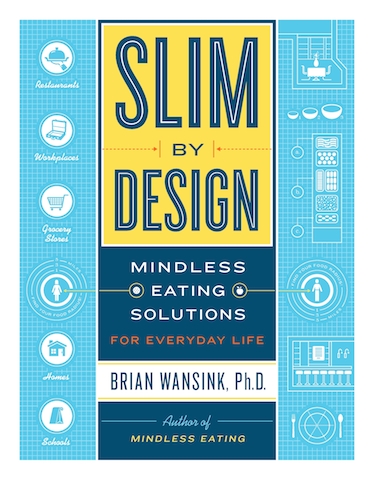The Canadian Regime Ebook Readers
Posted : admin On 24.08.2019The Canadian Regime: An Introduction to Parliamentary. By Patrick Malcolmson The Canadian Regime: An Introduction to Parliamentary Government in Canada, Sixth Edition. By Patrick Malcolmson; Richard Myers; Gerald Baier; Tom Bateman. EBook: Document. Toronto: University of Toronto Press.
Not Just Kindles
With prices starting below the $100 mark, it's a great time to buy an ebook reader. But before you settle on a single device, you have some decisions to make. As you can see, Amazon's Kindle line makes up the bulk of our top picks, and for many people will be
What Screen Type and How Big?
Basic ebook readers use monochrome, E Ink screens to display text. E Ink looks a lot like paper, and it's easy on your eyes when reading for long periods. On the least expensive models, it's not backlit, so you'll need light to see the text, just as you would with a printed book. But most ebook readers now include edge lighting that lets you see in the dark. With each model, you can vary the intensity of the brightness from barely there to flashlight-bright. On the lowest settings, you can read in the dark while your partner sleeps peacefully next to you.
In all cases, E Ink is much easier to read in bright sunlight, while color touch screens on tablets tend to wash out, and their glossy displays can show distracting reflections.
The industry seems to have settled on six inches as the optimal display size for E Ink readers; this is what you'll find on most of Amazon's Kindles, for example. There are exceptions, though: Kobo's Forma is significantly larger, at 8 inches. And if it's clarity you're after, you're in luck: 300 pixels per inch seems to be the new standard among most recent ebook readers (aside from the base model Kindle).
Manufacturers are also improving the quality of these E Ink displays. A few years ago, page refreshes were sluggish, the entire screen flashed black with each page turn, and some early ebook readers had problems with text contrast, which made for difficult reading. That's all history. The latest readers have crisp, clear text, and employ caching schemes that almost never refresh the full page; most of the time, only the letters fade out and back in again. The page refreshes themselves are much faster than before.

Meanwhile, touch screens have an innate advantage: On-screen keyboards make it easy to take notes or run searches within the text of your books. Also, maneuvering a massive online bookstore on a device with a
So E Ink is great for reading books, but tablet screens offer a bevy of other benefits. Their color screens mean you can read much more than books: magazines and comic books are just two examples. Best of all, even lower-cost tablets like the Fire 7 can browse the web, stream video from Netflix, Hulu or other sources, play music, and run apps

Will You Read on the Beach?
If you like to read in the bath, by the pool, or on the beach, you might want to consider buying a waterproof ebook reader. You have a few options. The Amazon Kindle Oasis, the latest Kindle Paperwhite, the Kobo Forma, and the Kobo Aura H2O Edition 2 are all rated to withstand submersion in water to some degree. The Kindle Oasis even has page turn buttons so you can easily flip between pages when your hands are wet.
What Kind of Wireless Connection Do You Need?
An always-on cellular radio lets you buy and download books from anywhere, over the air, for free (aside from the cost of the book itself, of course). Most devices offer Wi-Fi as the base level wireless connection—at a much lower cost—with 3G cellular data only available as part of a
As long as you don't mind waiting until you're at home or near a hotspot to shop for new books, Wi-Fi should work for you. A select few may still prefer to pony up for 3G to buy a new book while, say, on a long train trip, or lounging at the beach.
Internal storage capacity is not much of a concern. Most every ebook reader you can buy today can store more than 1,000 books, with some offering room for
How About the Books?
This is where things get a little complex, so bear with us for a moment. There's no single universal ebook format; essentially, when you choose an ebook reader, you're making a decision
With free, public domain books, you have some more flexibility, but it's actually more complicated. For example, Google offers over a million free books in the popular, open ePub format, which many public libraries now use for lending books. However, Kindles don't support ePub. Amazon launched its own public library lending tie-in, which differs on a branch-to-branch basis. Amazon also has the Kindle Owners' Lending Library, which lets you borrow a book a month from a selection of over one million titles, but only if you pay $99 a year for the Amazon Prime service. It also gives you unlimited access to Amazon's Prime Reading library.
The Canadian Regime Ebook Readers Download
To make things even murkier, the ebook stores themselves aren't all the same. Book selection, size, and pricing
For more, see How to Get Free (or Cheap) New Ebooks and How to Put Free Ebooks on Your Amazon Kindle. And for an in-depth comparison of supported formats across various ebook readers, check out Wikipedia.
What About Ebook Apps?
One saving grace is that many of the major ebook reader vendors have developed an entire ecosystem of apps around their chosen format. For example, you can start reading a book on your Kindle Paperwhite at home; then, while waiting in line at the grocery store, you can fire up your iPhone's Kindle app and pick up exactly where you left off in the same book, but on your phone.
The size of the app ecosystem varies by format. The Apple iPad and iPhone both run iBooks, a flexible app that looks great, but doesn't have quite the same book selection as Amazon for digital books. Amazon also makes iPad apps, along with versions for iPhone, Android, and other devices; in
In short, if you plan to read digital books on multiple gadgets, be sure to read our product reviews, and note each manufacturer's list of supported devices.
How Much Do You Want to Spend?
This is one place where there's nothing but good news: Prices have fallen considerably across the board. While tablets are mostly a separate category of consumer electronics—with higher prices—you've got plenty of good options for less than $200, all of which are still great for reading. And on the higher end, Amazon's Kindle Oasis is expensive, but it's a good buy for dedicated bookworms.
With that in mind, these are our favorite dedicated ebook readers you can buy today. If you're getting a Paperwhite, check out our 13 Paperwhite Tips Every Reader Needs to Know. And if you'd rather do your reading on a color screen, head over to our top tablet picks.
The Canadian Regime Ebook Readers Book
Best eReaders Featured in This Roundup:
Amazon Kindle Paperwhite (2018) Review
MSRP: $129.99Pros: Waterproof. Flat front is easy to clean. Plays audiobooks over Bluetooth. Long battery life.
Cons: Doesn't support Immersion Reading.
Bottom Line: For $130, the waterproof Kindle Paperwhite offers more for your money than any other ebook reader on the market.
Read ReviewKobo Clara HD Review
MSRP: $129.99Pros: Leading public library support. Excellent native file format support. Small and light. Color-changing front light.
Cons: Not waterproof.
Bottom Line: The Kobo Clara HD is the best all-around e-reader for anyone who borrows books from public libraries.
Read ReviewAmazon Kindle Oasis (2019) Review
MSRP: $249.99Pros: Adjustable backlight. Slim, striking design. Bright, crisp screen. Waterproof.
Cons: Expensive. Clunky Overdrive compatibility.
Bottom Line: The 2019 edition of the slim, waterproof Amazon Kindle Oasis adds a warmth-adjustable backlight for less eye strain, thought most people will be just fine spending nearly half the price on the Paperwhite.
Read ReviewAmazon Kindle (2019) Review
MSRP: $89.99Pros: Front light. Similar performance to other Kindles.
Cons: Not waterproof. Relatively low-resolution screen. Dated design.
Bottom Line: The latest low-cost Kindle improves night reading with its front light, but the slightly more expensive Paperwhite offers better overall value for most readers.
Read ReviewBarnes & Noble Nook GlowLight 3 Review
MSRP: $119.99Pros: Sharp screen. Color-changing front light goes from blue to yellow. Physical page turn buttons. ePub support.
Cons: Sluggish UI. Limited store selection. Awkward for library books.
Bottom Line: The Barnes & Noble Nook GlowLight 3 illuminates your reading with a warm, color-changing light, but can't get past Amazon's superior ebook selection.
Read ReviewKobo Forma Review
MSRP: $279.99Pros: Big screen is great for large type and manga. Light for its size. Waterproof. Public library integration. Handles many file formats.
Cons: Expensive. Not pocketable. Materials don't feel premium.
Bottom Line: Kobo's top-of-the-line ebook reader is great if you feel other options are too cramped, but it's more device than most people need.
Read ReviewBarnes & Noble Nook GlowLight Plus (2019) Review
MSRP: $199.99Pros: Big screen. Bright, color-changing front light. Waterproof.
Cons: Poor software. Questionable long-term support.
Bottom Line: Barnes & Noble's Nook GlowLight Plus ebook reader has great hardware for the price, but its software and services are limited and buggy.
Read Review